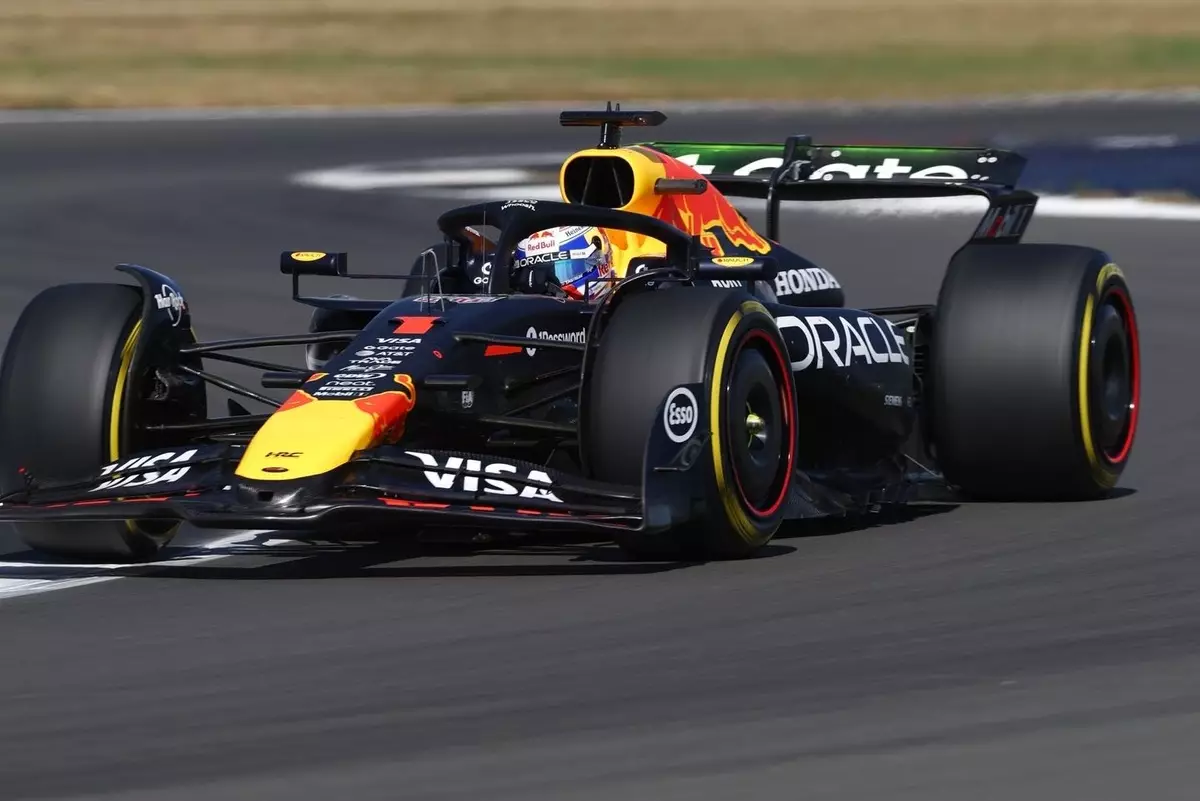Red Bull Racing, historically a powerhouse in Formula 1, is currently navigating an unsettling phase of performance inconsistency and internal tensions. Despite their previous string of victories, recent races reveal vulnerabilities that could threaten their longstanding success. The team’s recent performance at Silverstone exposed significant weaknesses — primarily a lack of aerodynamic balance and sensitivity to adverse conditions like wind, which hampers their competitiveness. Max Verstappen, the reigning champion and a pivotal figure in the team, openly voiced his dissatisfaction, marking a departure from the usual stoic demeanors often associated with top-tier athletes. This candid criticism signals an internal culture where frustration is spilling over, possibly hinting at deeper issues within the team’s strategic planning and car development cycle.
Furthermore, the team’s struggles are compounded by an evolving landscape of competitors, particularly McLaren, who have capitalized on Red Bull’s faltering form. For a team that has thrived on innovation and swift adaptation, this slowdown could serve as a wake-up call necessitating more than incremental improvements. Verstappen’s frequent complaints about the car’s balance, especially in tricky conditions, underscore the urgent need for the engineers to re-evaluate their approach. His comments about the car’s sensitivity to wind and the underperformance in specific corners reveal that the current setup not only fails to maximize performance but also undermines driver confidence — a dangerous spiral when one considers the importance of psychological momentum in racing.
An Internal Push for Innovation and the Fight to Retain Talent
In the midst of on-track frustrations, team management like Christian Horner is strategically shifting focus toward future growth. His confident assertions about investments in new technology—such as upcoming wind tunnels and upgraded organizational structures—highlight a recognition that innovation must be relentless. Horner’s comments about “tools” being added to the team’s arsenal point to an understanding that staying ahead requires continuous evolution, especially given the rapidly changing dynamics of F1 technology and competition.
However, the ongoing rumors about Verstappen potentially leaving for Mercedes challenge the team’s long-term stability. The Dutch driver has been the cornerstone of Red Bull’s recent dominance, yet his dissatisfaction hints at a deeper rift; an impatience with the team’s pace of development or perhaps the environment that is not meeting his high standards. Horner’s reassurances about the contract do little to dispel speculation, and perhaps this silence is strategic, meant to avoid destabilizing negotiations further. Yet, it also underscores the fragile nature of team-driver relationships in a sport that is as much about politics and perception as engineering mastery.
Investing in new tools and organizational improvements is crucial, but they represent a reactive response rather than a proactive solution. It remains to be seen whether these initiatives will translate into tangible on-track improvements or merely serve as bandages for deeper systemic issues. If Red Bull truly aspires to maintain their competitive edge, they must confront their deficiencies headlong, push for innovative solutions, and, more critically, foster a team environment capable of inspiring confidence from their star driver.
Frenzied Race Weekend Expectations and the Road Forward
Silverstone’s windy conditions served as a harsh reminder of the unpredictable nature of Formula 1 and how delicate car setups can be under changing circumstances. Verstappen’s candid critique that the car felt “quite a bad day” isn’t just about the immediate discomfort; it signals a broader challenge in maintaining consistency. When even a driver of his caliber admits to struggle, it exposes the fragility of the current package.
The team’s focus must now shift from damage control to strategic overhaul. This includes not only technical upgrades but also enhancing driver confidence through better understanding of the vehicle’s nuances. The recurring theme of Red Bull’s underperformance in speed and handling — particularly around specific corners and under wind influence — demands targeted aerodynamic and mechanical interventions. These issues seem fixable, but they require urgent, precise, and innovative problem-solving that cannot afford to lag behind their rivals.
Perhaps most critically, the ongoing narrative about Verstappen’s future underscores a wider battleground for talent retention in F1. As driver contracts become political arenas, teams like Red Bull need to demonstrate that they are more than just high-performance machines—they are institutions capable of nurturing talent, satisfying ambitions, and continuously pushing the boundaries of innovation. Failure to do so may see their star driver seek greener pastures, and, in turn, jeopardize the entire team’s competitive future.
The next few races will serve as key indicators of whether Red Bull can reinvigorate its formula for success or if it risks slipping behind a rapidly evolving grid. Building on technological upgrades and fostering a stable, motivated environment will be essential. The challenge is immense, but so is the potential for redemption if the team’s leadership channels Verstappen’s dissatisfaction into a catalyst for lasting improvement.

